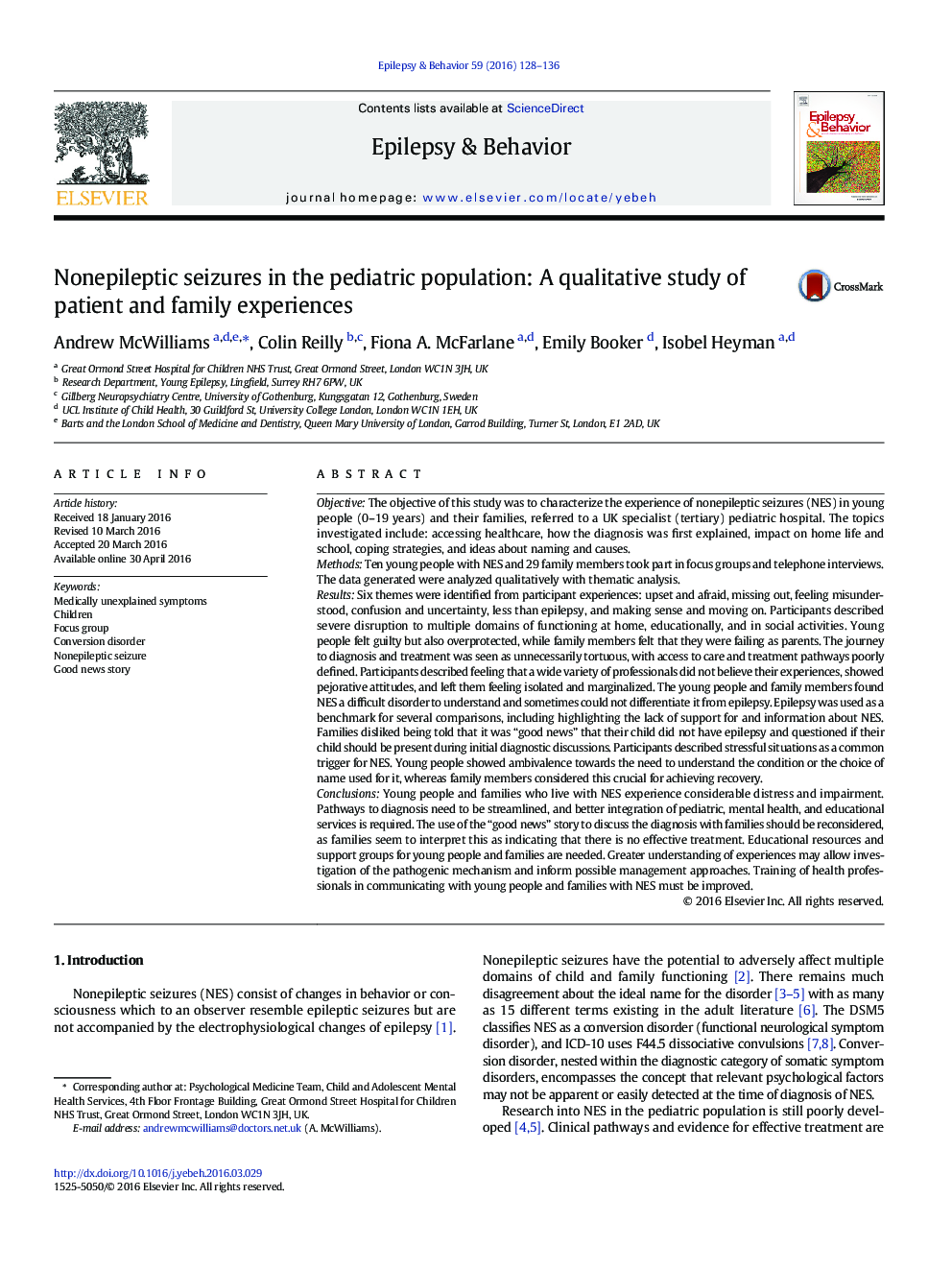| کد مقاله | کد نشریه | سال انتشار | مقاله انگلیسی | نسخه تمام متن |
|---|---|---|---|---|
| 6010126 | 1579832 | 2016 | 9 صفحه PDF | دانلود رایگان |
- Pediatric NES are associated with significant disruption to family and social life.
- Health professionals are often perceived as judgemental and not empathetic.
- Services for NES were frequently regarded as inferior to those for epilepsy.
- The “good news story” (that NES are not epilepsy) is often poorly received.
- Better integration of mental and physical health and education is required.
ObjectiveThe objective of this study was to characterize the experience of nonepileptic seizures (NES) in young people (0-19Â years) and their families, referred to a UK specialist (tertiary) pediatric hospital. The topics investigated include: accessing healthcare, how the diagnosis was first explained, impact on home life and school, coping strategies, and ideas about naming and causes.MethodsTen young people with NES and 29 family members took part in focus groups and telephone interviews. The data generated were analyzed qualitatively with thematic analysis.ResultsSix themes were identified from participant experiences: upset and afraid, missing out, feeling misunderstood, confusion and uncertainty, less than epilepsy, and making sense and moving on. Participants described severe disruption to multiple domains of functioning at home, educationally, and in social activities. Young people felt guilty but also overprotected, while family members felt that they were failing as parents. The journey to diagnosis and treatment was seen as unnecessarily tortuous, with access to care and treatment pathways poorly defined. Participants described feeling that a wide variety of professionals did not believe their experiences, showed pejorative attitudes, and left them feeling isolated and marginalized. The young people and family members found NES a difficult disorder to understand and sometimes could not differentiate it from epilepsy. Epilepsy was used as a benchmark for several comparisons, including highlighting the lack of support for and information about NES. Families disliked being told that it was “good news” that their child did not have epilepsy and questioned if their child should be present during initial diagnostic discussions. Participants described stressful situations as a common trigger for NES. Young people showed ambivalence towards the need to understand the condition or the choice of name used for it, whereas family members considered this crucial for achieving recovery.ConclusionsYoung people and families who live with NES experience considerable distress and impairment. Pathways to diagnosis need to be streamlined, and better integration of pediatric, mental health, and educational services is required. The use of the “good news” story to discuss the diagnosis with families should be reconsidered, as families seem to interpret this as indicating that there is no effective treatment. Educational resources and support groups for young people and families are needed. Greater understanding of experiences may allow investigation of the pathogenic mechanism and inform possible management approaches. Training of health professionals in communicating with young people and families with NES must be improved.
Journal: Epilepsy & Behavior - Volume 59, June 2016, Pages 128-136
